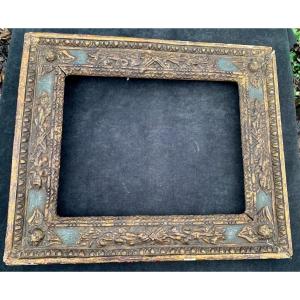Curiosity item
South of Italy, 17th century
Curiosity, Very rare frame from the Baroque period in cartapesta or papier mâché, in perfect imitation of a gilded wooden carved model.
The frame in the form of flat strips with raised borders is decorated in its spandrels / coins with winged cherub heads and floral friezes on its covers.
The roots of papier maché techniques are in both the Middle and Far East. Paper was invented in China in the second century AD, and papier maché was developed as a way to re-use the new material which at the time was very rare and costly. Papier maché it can be very strong but also very light weight. With strengthening layers of varnish, it was used to make soldiers' helmets and lacquered boxes... and even furniture. With the advent of trade with the Orient, Papier Mache spread from Samarkand and Morocco until about 900 AD it spread to Spain, Germany, France and Italy. The French craftsmen made cups and snuff boxes from it, with serving platters, pots, vases and furniture being made in other countries. A very strong board could be produced by baking layered sheets or shredded paper. For even stronger products, papier maché was mixed with linseed oil before being baked. In the 17th century, successful trade between the Republic of Venice and merchants from the Salento peninsula in Puglia spurred the development of papier maché techniques in the beautiful baroque town of Lecce. The high art of Cartapesta was born...
The craftsmen of Lecce did not possess valuable materials, but with the help of straw, rags, plaster and some tools, they developed their craftsmanship using this technique of Cartapesta. Traditionally, Cartapesta is a pulp macerated in a solution of water and flour glue, packed into a mold and boiled. The mass is then pressed to remove excess water and mixed with a solution of animal glue, pasta starch and resin. The resulting compound is applied to a roughly shaped figure made of a wooden armature...the shape obtained by winding straw around the armature with a fine wire. Then the work is left to dry slowly outdoors or in heated rooms, then hot irons are used to score the folds and create the expressive details. Once coated with substances to protect it from humidity, the model is ready to be painted or gilded, which adds a real magic to some of these pieces."
To visit in Lecce, the Castle of Charles V for the Cartapesta Museum (Museo della Cartapesta)
Total frame dimensions: 49.5*40cm, and inside 28.4*38.4cm (thickness 4cm, 7cm with the suspension ring)
Original iron suspension ring placed to hang the frame vertically, but could be easilymodified for use in length.
Very good condition, note slight gaps between the rods in the corners, understandable given the material and the period considered.
The reverse of the frame is painted in copper red like red painting layer under gilding of the frames; very nice patina of the gilding.
!!! Please check on my next announcements an equally curious miniature church ensconce in wood and openwork papier-mâché, silvered this time ! ( (2 last 2 photos)
















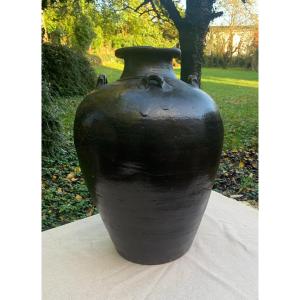


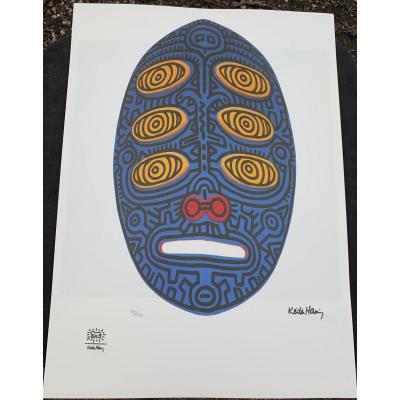


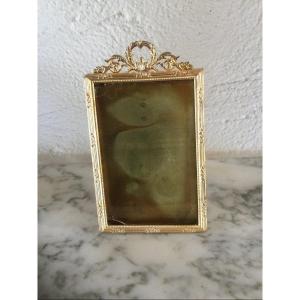
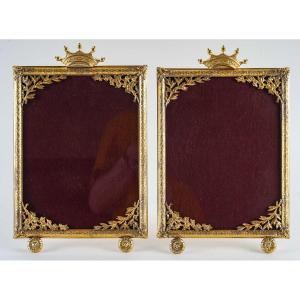


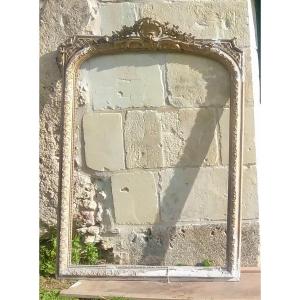



 Le Magazine de PROANTIC
Le Magazine de PROANTIC TRÉSORS Magazine
TRÉSORS Magazine Rivista Artiquariato
Rivista Artiquariato
